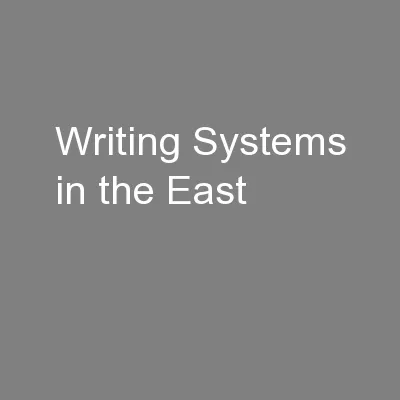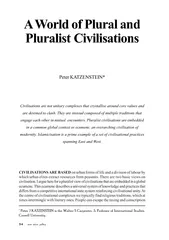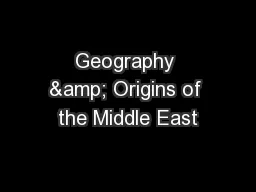PPT-Writing Systems in the East
Author : lois-ondreau | Published Date : 2016-04-28
Lingfei zhou Jingyu guan shuo wang qin li Pro W A Johnson Greek civ duke Kunshan university Writing systems in the East 1 Step 1 What is the East Writing
Presentation Embed Code
Download Presentation
Download Presentation The PPT/PDF document "Writing Systems in the East" is the property of its rightful owner. Permission is granted to download and print the materials on this website for personal, non-commercial use only, and to display it on your personal computer provided you do not modify the materials and that you retain all copyright notices contained in the materials. By downloading content from our website, you accept the terms of this agreement.
Writing Systems in the East: Transcript
Download Rules Of Document
"Writing Systems in the East"The content belongs to its owner. You may download and print it for personal use, without modification, and keep all copyright notices. By downloading, you agree to these terms.
Related Documents








![[EBOOK] - 180 Days of Writing for Fourth Grade - An Easy-to-Use Fourth Grade Writing](https://thumbs.docslides.com/901130/ebook-180-days-of-writing-for-fourth-grade-an-easy-to-use-fourth-grade-writing-workbook-to-practice-and-improve-writing-skills.jpg)
![[DOWNLOAD] - 180 Days of Writing for Sixth Grade - An Easy-to-Use Sixth Grade Writing](https://thumbs.docslides.com/901243/download-180-days-of-writing-for-sixth-grade-an-easy-to-use-sixth-grade-writing-workbook-to-practice-and-improve-writing-skills.jpg)
![[READ] - 180 Days of Writing for Fifth Grade - An Easy-to-Use Fifth Grade Writing Workbook](https://thumbs.docslides.com/901394/read-180-days-of-writing-for-fifth-grade-an-easy-to-use-fifth-grade-writing-workbook-to-practice-and-improve-writing-skills.jpg)
![[DOWNLOAD] - 180 Days of Writing for Kindergarten - An Easy-to-Use Kindergarten Writing](https://thumbs.docslides.com/901444/download-180-days-of-writing-for-kindergarten-an-easy-to-use-kindergarten-writing-workbook-to-practice-and-improve-writing-skills.jpg)
![[READ] - Writing a Successful College Application Essay (Barron\'s Writing a Successful](https://thumbs.docslides.com/901982/read-writing-a-successful-college-application-essay-barron-s-writing-a-successful-college-application-essay.jpg)
![[DOWNLOAD] - The Creative Writing Student\'s Handbook (Creative Writing Matters Guides)](https://thumbs.docslides.com/905252/download-the-creative-writing-student-s-handbook-creative-writing-matters-guides.jpg)
![[EBOOK] - Vocational & Technical Schools - East: More Than 2,600 Vocational Schools East](https://thumbs.docslides.com/905503/ebook-vocational-technical-schools-east-more-than-2-600-vocational-schools-east-of-the-mississippi-river-peterson-s-vocati.jpg)